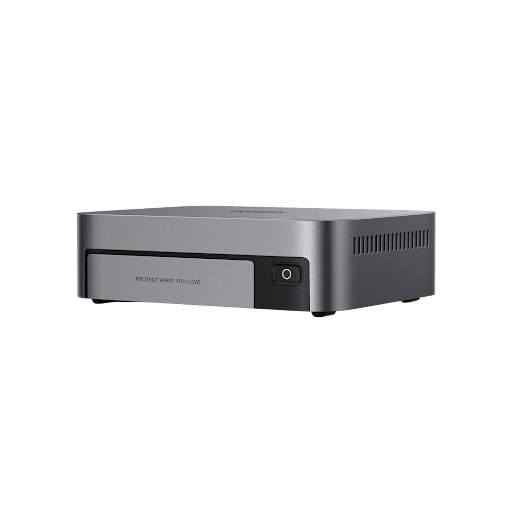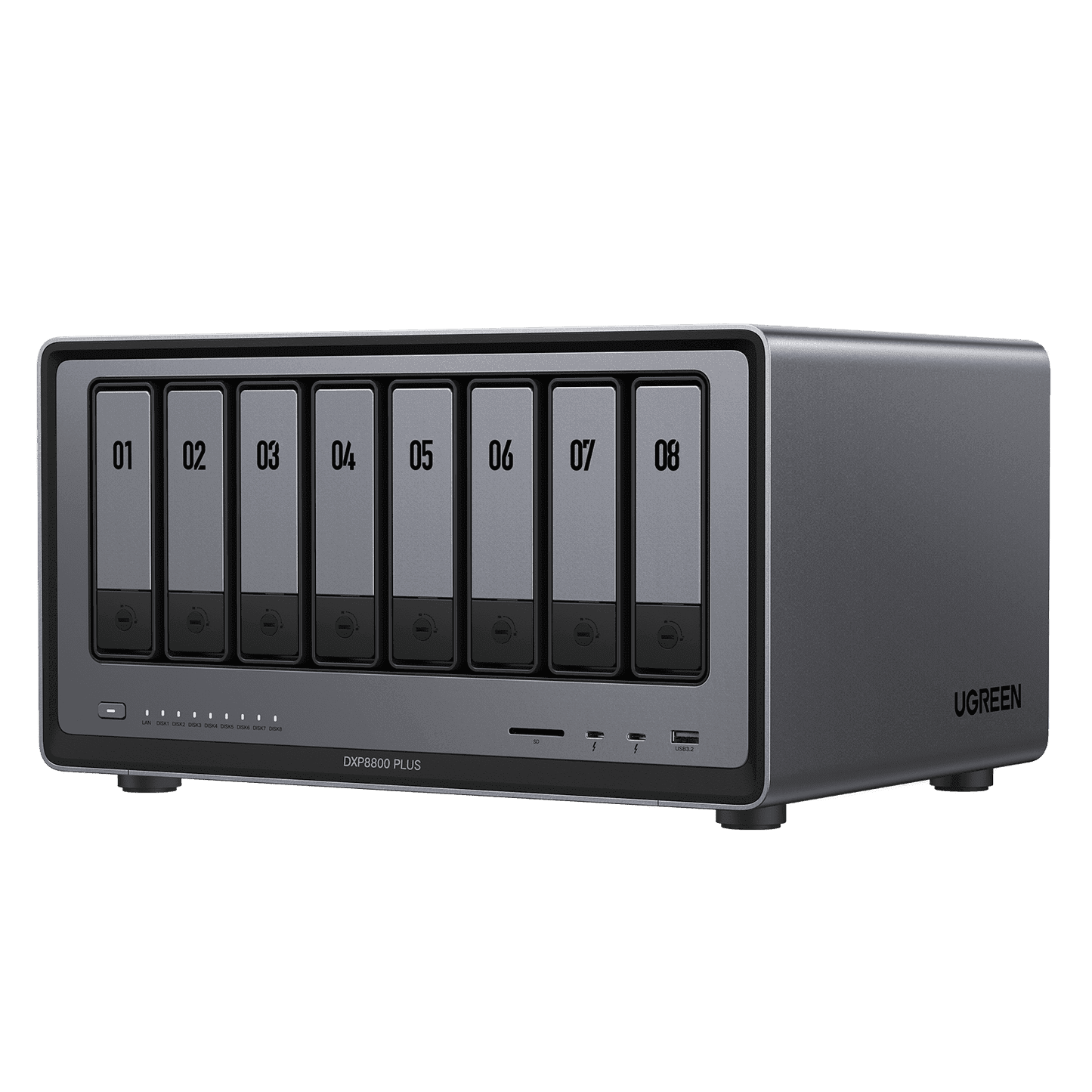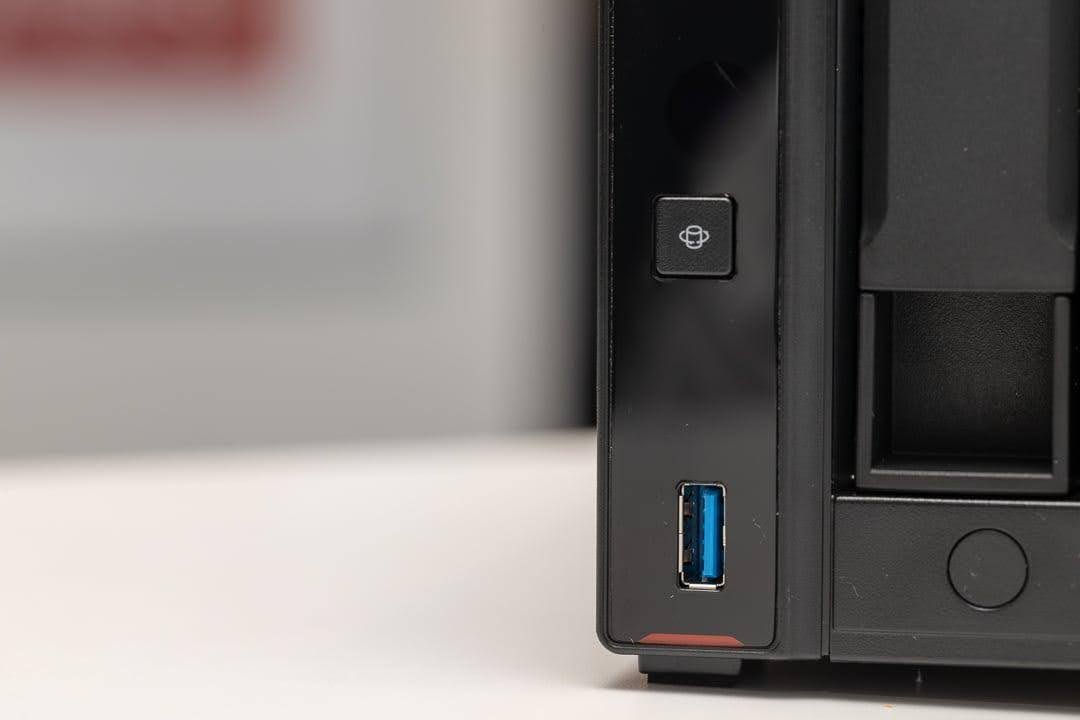Creative professionals often run into storage problems when external drives fill up during projects or when clients need files that are saved in different locations. Today’s cameras create huge RAW photo files and 4K videos that take up massive amounts of space, making regular external drives insufficient for professional work.
NAS storage systems fix these issues by putting all your media files in one central location with built-in security and sharing capabilities. Instead of managing multiple drives and worrying about losing important work, NAS storage provides expandable space, automatic backups, and secure client access. Multiple team members can work on the same projects at the same time without slow file transfers or version conflicts.
Understanding NAS Storage: Beyond Basic Drives
Network Attached Storage (NAS) represents a significant leap forward from traditional storage solutions, functioning as a dedicated file server that connects directly to your network. Unlike external hard drives that tether to a single computer, or cloud storage that depends on internet connectivity, NAS systems create a private cloud within your local network. At its core, a NAS contains multiple drive bays supporting RAID (Redundant Array of Independent Disks) configurations, ensuring data protection through drive redundancy. This architecture allows for seamless scalability – simply add more drives as your storage needs grow. The true power of NAS lies in its ability to serve multiple users simultaneously, enabling team members to access, edit, and share files without file transfer bottlenecks. With built-in processing power and operating systems, modern NAS devices handle complex tasks like media transcoding and automated backup scheduling, transforming them from simple storage boxes into comprehensive data management hubs. For creative professionals, this means having a central repository that’s always accessible, inherently secure, and capable of growing alongside your business.

Why Creative Professionals Need NAS for Large Media Files
Real-World Media Workflow Challenges
Today’s creative workflows generate staggering amounts of data, with professional cameras routinely producing RAW files exceeding 100MB per image and 4K video footage consuming upwards of 500GB per hour of footage. This exponential growth in file sizes has exposed the severe limitations of traditional storage solutions. External hard drives, while portable, create a fragmented ecosystem where files become scattered across multiple devices, making asset management a nightmare. The seemingly endless shuffle of drives between team members and clients introduces risks of data loss and version control chaos. Cloud storage, despite its convenience, introduces its own set of challenges – monthly subscription costs that scale painfully with storage needs, and the practical impossibility of quickly transferring terabytes of footage through typical internet connections.

Professional photographers face daily battles managing thousands of images across multiple shoots, often needing simultaneous access from different editing stations. A wedding photographer, for instance, might capture 4000 RAW images per event, totaling 200GB that needs immediate backup, sorting, and editing access. Video production teams struggle with even greater demands, requiring real-time collaboration on massive project files while maintaining multiple versions for client revisions. Graphic designers juggling numerous client projects need robust version control and instant access to years’ worth of assets, all while ensuring their intellectual property remains secure. Many creative professionals are finding solutions in systems like the UGREEN NASync series, which offers enterprise-grade storage capabilities specifically designed for media-intensive workflows, enabling multiple team members to work simultaneously on the same projects without file transfer bottlenecks or version conflicts.
Data Security: The Non-Negotiable for Creative Assets
Implementing Military-Grade Protection
In the digital age, creative professionals face unprecedented security threats to their valuable assets. Unprotected storage solutions leave work vulnerable to ransomware attacks, which can encrypt entire portfolios and demand hefty ransoms for recovery. Physical theft of external drives or equipment can result in the permanent loss of irreplaceable client work, while accidental deletions without proper backup systems can devastate project timelines. NAS systems counter these threats through robust security features that rival enterprise-grade solutions. At the core is AES-256 encryption, protecting data both at rest and in transit, ensuring files remain unreadable even if drives are physically compromised.
The multi-layered security approach of NAS systems includes automated snapshot technology, creating point-in-time backups that enable quick recovery from ransomware attacks or accidental deletions. User permission tiers allow granular control over file access, ensuring team members and clients can only view and modify appropriate content. Unlike cloud storage, where data security relies on third-party providers, NAS systems put control firmly in the creator’s hands, with local encryption keys and physical access management. The system’s ability to automatically replicate data to offsite locations provides an additional safety net, following the critical 3-2-1 backup rule: three copies of data, on two different media types, with one copy stored offsite.
Setting up military-grade protection begins with enabling hardware-accelerated encryption during initial configuration. Next, establish automated backup schedules, with snapshots taken hourly for active projects and daily for archived work. Configure user groups with role-based access controls, separating client viewing permissions from team editing rights. Maintain security through regular firmware updates, typically scheduled during off-hours to minimize workflow disruption. These systematic protections transform your NAS from a simple storage device into a fortress for your creative assets, providing peace of mind that your work remains secure yet accessible.
Photo Management Mastery with NAS Systems
Modern NAS systems transform chaotic photo libraries into streamlined, organized collections through intelligent management features. Advanced metadata handling capabilities automatically extract camera settings, location data, and timestamps, creating searchable databases that make finding specific shots effortless. AI-powered sorting algorithms can categorize images by content, faces, or scenes, while custom tagging systems enable personalized organization schemes. Professional editing workflows become seamless as NAS systems integrate directly with industry-standard software like Adobe Lightroom and Capture One, allowing photographers to work on full-resolution files at local network speeds without creating redundant copies.
Client collaboration reaches new levels of professionalism with secure web portals that replace risky email attachments and unreliable file transfer services. These portals enable photographers to create branded galleries with customizable access levels, watermarking options, and download restrictions. For long-term preservation, NAS systems implement sophisticated archival strategies, including automated integrity checking that monitors for file corruption, scheduled migrations to newer storage media, and the creation of standardized preservation formats that ensure decades of accessibility. This comprehensive approach to photo management eliminates the organizational headaches that plague many photography businesses while establishing professional-grade workflows that scale with growing portfolios.
Future-Proofing Your Creative Business with NAS Solutions
The evolution of creative workflows demands storage solutions that go beyond basic capacity – they must provide an impenetrable fortress for your digital assets while enabling seamless collaboration. Network Attached Storage systems have emerged as the definitive answer, offering the perfect synthesis of massive storage capacity, military-grade security, and workflow optimization. By centralizing assets in a secure, scalable environment, NAS eliminates the chaos of scattered external drives while providing protection that cloud storage simply cannot match. The ability to implement granular access controls, automated backup systems, and professional asset management tools transforms how creative teams collaborate and safeguard their work. When evaluating NAS solutions, focus on systems that offer hardware transcoding capabilities, robust security features, and seamless integration with your creative applications. As file sizes continue to grow and security threats evolve, investing in a professional NAS system isn’t just about solving today’s storage challenges – it’s about future-proofing your creative business for the digital demands of tomorrow.






